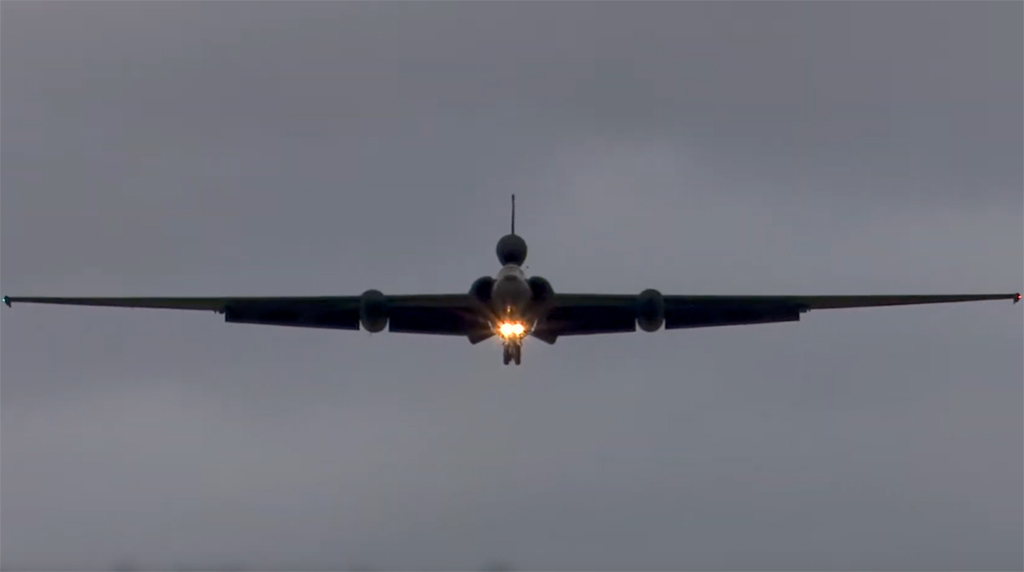An interesting look at the peculiar landing procedure of the U-2 Dragon Lady.
The video below shows a U.S. Air Force U-2 Dragon Lady, radio callsign “FORTH 01” recovering at RAF Fairford, that has hosted a semi-permanent deployment of U-2s spyplanes for quite some time now, at the end of a surveillance mission.
The footage, filmed last week by our friend Ben Ramsay of UK Aviation Movies, is worth of remark because it includes radio talkdown and provides a look at the iconic ISR (Intelligence Surveillance Reconnaissance) aircraft and its sensors.
The U-2S #68-10337/BB belongs to the 99th Expeditionary Reconnaissance Squadron, from Beale AFB, California, and carries the ASARS-2 (Advanced Synthetic Aperture Radar System) under the extended radome on the nose that allows the aircraft to catch high-fidelity radar imagery of the battleground out to about 100 miles on either side of the aircraft’s position; a huge the huge Senior Span or Senior Spur dorsal pod, that houses an uplink antenna for satellite communication that allows the U-2S to beam its intelligence (data or imagery) back to any location BLOS (Beyond Line Of Sight) in near to real-time; and the wing-mounted “Senior Glass” superpods housing intelligence gathering sensors.
From 01:10 mark, you also get a pretty cool view at the landing procedure and the role played by the “chase car”: chase automobiles (in this case, a Dodge Charger) are used to supervise take offs, landings (and touch and gos) wherever U-2 Dragon Lady pilots bring their planes. Such sportcars are driven by highly trained pilots who are in contact with and act as ground-based wingmen for the pilot aboard the Dragon Lady: they call out the residual altitude to touchdown and wing attitude, and provide general assistance by radio talkdown. In fact, the U-2 is very difficult to land: its shape is such that the pilot’s view is obstructed by the airframe and there’s also a significant risk of hitting any ground obstacle with a wingtip. Moreover, the bicycle configuration of the landing gear, with a forward set of main wheels located just behind the cockpit, and a rear set located behind the engine, along with the need to drop a wingtip to the ground (on titanium skidplates) to come to a halt, make landings extremely difficult. That’s why Dragon Lady pilots (as well as RQ-4 Global Hawk unmanned planes) rely on chase cars to perform safe landing operations across the globe.
Interestingly, the aircraft can also be tracked online every now and then, as they launch or return to their deployment base:
U-2 Dragon at 60,000ft over Denmark this afternoon heading back to Fairford, UK. Given it’s role the transponder is off when it doesn’t want to be seen #Dragon #OSINT pic.twitter.com/YZjfSkKQtr
— Saint1 (@Saint1Mil) July 21, 2020













